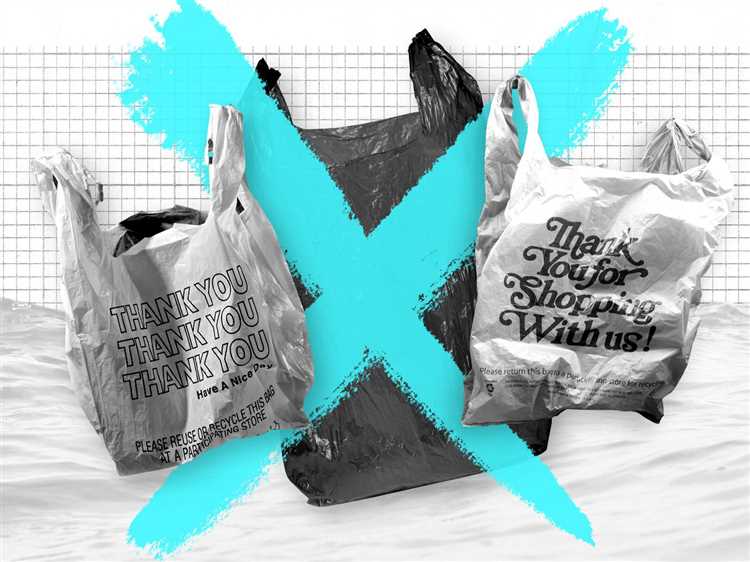
In today’s society, plastic bags have become an integral part of our daily lives. They are used for everything from carrying groceries to storing household items. However, the history of plastic bags in the United States dates back to the 1950s, when they were first introduced as a convenient alternative to paper bags.
Plastic bags were initially developed as a solution to the environmental problems associated with paper bags. At the time, paper bags were the most common type of packaging used by retailers. However, their production required cutting down trees and consuming large amounts of water and energy. Plastic bags offered a more sustainable option, as they could be easily produced and reused multiple times.
The first plastic bags were made from a type of plastic called polyethylene. These bags were durable, lightweight, and waterproof, making them ideal for carrying goods. As the demand for plastic bags grew, manufacturers began to explore different types of plastics and production methods to improve their quality and reduce costs.
By the 1970s, plastic bags had become increasingly popular and were being used by a wide range of industries. However, concerns began to arise about their impact on the environment. Plastic bags were not biodegradable and could take hundreds of years to decompose. This led to calls for greater regulation and alternative solutions to reduce their use.
- The Rise of Plastic Bags
- Discover the Origins of Plastic Bags in the United States
- The Early Days of Plastic Bags
- The Rise in Popularity
- The Benefits and Drawbacks
- The Benefits
- The Drawbacks
- Explore the Positive and Negative Effects of Plastic Bags
- Positive Effects
- Negative Effects
- The Environmental Impact
- Learn about the Environmental Consequences of Plastic Bags
- 1. Pollution
- 2. Resource Depletion
- 3. Energy Consumption
- 4. Waste Management Challenges
- Regulations and Bans
- Local Regulations
- Statewide Bans
- Understand the Governmental Laws and Restrictions on Plastic Bags
- Q&A:
- When were plastic bags introduced in the United States?
- Why were plastic bags invented?
- How did plastic bags become popular in the United States?
- What are the environmental impacts of plastic bags?
- Are there any regulations in place regarding plastic bags in the United States?
- When were plastic bags first introduced in the United States?
The Rise of Plastic Bags
The introduction of plastic bags in the United States revolutionized the way people carried and transported goods. Plastic bags were first introduced in the 1950s and quickly gained popularity due to their lightweight and durable nature.
Initially, plastic bags were only used in commercial settings, such as grocery stores, as a convenient alternative to paper bags. However, their popularity grew rapidly, and they soon became a common sight in households across the country. Plastic bags were embraced for their affordability and ease of use, making them a preferred option for packaging and carrying items.
As the demand for plastic bags increased, so did the production. Manufacturers began producing plastic bags on a large scale, resulting in lower production costs and making them even more accessible to the general public. The convenience and affordability of plastic bags led to a widespread adoption and a shift away from traditional paper bags.
The rise of plastic bags was further fueled by advancements in manufacturing technology, which enabled the production of bags in various shapes, sizes, and colors. This allowed businesses to differentiate themselves by offering customized bags, creating a new advertising medium. Plastic bags became not only a practical means of carrying items, but also a way to promote brands and attract customers.
The mass production and usage of plastic bags, however, came with its own set of environmental concerns. The non-biodegradable nature of plastic meant that discarded bags would persist in landfills and ecosystems for centuries, causing pollution and harm to wildlife. In recent years, there has been a growing awareness about the environmental impact of plastic bags, leading to efforts to reduce their usage and promote more sustainable alternatives.
Despite the environmental concerns, the rise of plastic bags in the United States has undeniably left a lasting impact on consumer behavior and the retail industry. The convenience, affordability, and versatility of plastic bags have made them a staple of modern society, although efforts are now being made to find more sustainable solutions to the plastic waste problem.
Discover the Origins of Plastic Bags in the United States
Plastic bags have become an integral part of our daily lives, but have you ever wondered where they came from? In the United States, plastic bags have a relatively short but interesting history that has shaped our consumer culture and created both convenience and controversy.
The Early Days of Plastic Bags
The origins of plastic bags can be traced back to the early 1950s when scientists began experimenting with new materials and manufacturing techniques. In 1950, a Swedish engineer named Sten Gustaf Thulin invented the first plastic bag with a simple design featuring a basic handle, known as the “T-shirt bag” or “Grocery bag”. These bags were made from a low-density polyethylene (LDPE) plastic, which was both lightweight and durable.
Initially, these plastic bags were not widely adopted, as paper bags were the dominant packaging option. However, by the 1960s, advancements in plastic bag manufacturing technology and the growing popularity of supermarkets led to an increased demand for plastic bags. Plastic bags became a symbol of modern convenience and were hailed as a more hygienic and reusable alternative to paper bags.
The Rise in Popularity
As plastic bags gained popularity, major retailers and grocery stores began to incorporate them into their operations. The durability and cost-effectiveness of plastic bags made them an attractive option for businesses and consumers alike. Plastic bags offered numerous advantages, such as waterproofing, increased carrying capacity, and the ability to be printed with logos or advertisements.
By the 1980s, plastic bags had become a staple in retail establishments across the United States. Their widespread use was fueled by the consumer culture of convenience and the perception of plastic as a modern and innovative material. Plastic bags were not only used for groceries but also for a wide range of other retail products, ranging from clothing to electronics.
The Environmental Impact
While plastic bags provided convenience and versatility, they also raised concerns about their environmental impact. The durability and non-biodegradable nature of plastic bags meant that they could persist in the environment for hundreds of years.
In recent years, there has been a growing movement towards reducing the use of plastic bags and finding more sustainable alternatives. Many cities and states in the United States have implemented plastic bag bans or imposed fees on their usage to encourage consumers to switch to reusable bags.
In conclusion, plastic bags have a fascinating history that reflects the social and cultural changes in the United States. They started as a simple invention and quickly transformed into a symbol of convenience and consumerism. However, as we become more aware of the environmental impact of plastic bags, the future of this ubiquitous item remains uncertain.
The Benefits and Drawbacks
Plastic bags have become a staple in our modern society, providing numerous benefits in terms of convenience and functionality. However, the prevalence of plastic bags also comes with significant drawbacks that have raised concerns over their impact on the environment and human health.
The Benefits
First and foremost, plastic bags are lightweight and durable, making them easy to carry and convenient for consumers. They are also inexpensive to produce and transport, making them a cost-effective solution for retailers.
Plastic bags are also waterproof, which makes them suitable for protecting items from moisture damage. Additionally, their versatility allows them to be reused for various purposes such as storing and organizing household items.
Furthermore, plastic bags require less energy and resources to manufacture compared to alternatives such as paper or cloth bags. This lower production cost translates to a more affordable option for both consumers and businesses.
The Drawbacks
Despite their benefits, plastic bags have significant drawbacks that cannot be overlooked. One of the major concerns is their impact on the environment. Plastic bags are non-biodegradable, meaning they do not break down naturally over time. Instead, they persist in the environment for hundreds of years, contributing to pollution and posing a threat to wildlife.
Plastic bags are also a significant source of litter, cluttering landscapes, clogging drains, and polluting water bodies. The improper disposal of plastic bags results in environmental degradation and harm to ecosystems.
Moreover, the production and disposal of plastic bags require significant amounts of fossil fuels, contributing to greenhouse gas emissions and climate change. Additionally, the manufacturing process releases harmful chemicals into the atmosphere, which can have adverse effects on human health.
Furthermore, the lightweight nature of plastic bags makes them prone to being carried by the wind, leading to concerns about their impact on air pollution and their ability to spread microplastics across vast distances.
In conclusion, while plastic bags offer convenience and functionality, their drawbacks in terms of environmental pollution and potential health risks cannot be ignored. It is crucial to explore and adopt more sustainable alternatives to reduce our reliance on plastic bags and mitigate their negative impacts on the environment and human well-being.
Explore the Positive and Negative Effects of Plastic Bags
Plastic bags have become a common item in our daily lives, but they have also sparked much debate due to their environmental impact. Let’s take a closer look at the positive and negative effects of plastic bags.
Positive Effects
1. Convenience: Plastic bags are lightweight and easy to carry, making them a popular choice for transporting groceries and other items. Their durability and ability to be reused also add to their convenience.
2. Cost-effective: Plastic bags are inexpensive to produce, which makes them a cost-effective option for retailers. This allows businesses to offer bags to customers free of charge or at a low price.
Negative Effects
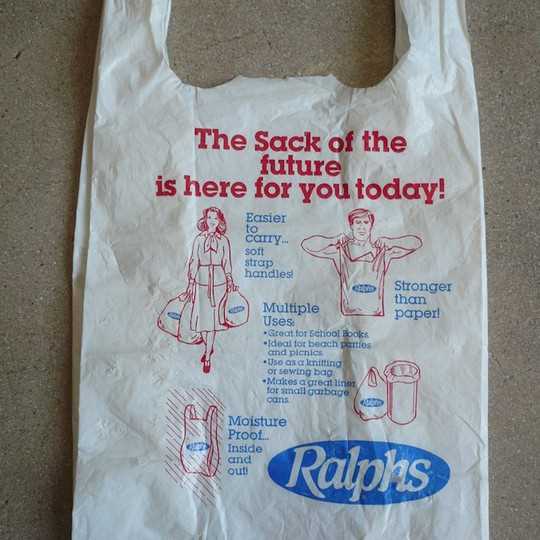
1. Environmental pollution: Plastic bags are non-biodegradable and can take hundreds of years to decompose. This means that once disposed of, they can persist in the environment for an extended period, contributing to pollution in our oceans, rivers, and landfills.
2. Wildlife hazards: Many marine animals, birds, and land animals mistake plastic bags for food or become entangled in them. This can result in suffocation, ingestion, or other injuries, which are often fatal.
3. Resource depletion: The production of plastic bags requires the consumption of natural resources such as crude oil and natural gas. The extraction and processing of these resources contribute to environmental degradation and may have long-term negative effects on our planet.
It is essential to weigh the positive and negative effects of plastic bags to make informed decisions regarding their use. While they offer convenience and affordability, their environmental impact cannot be ignored. Consider reusable bags or alternative packaging options to reduce plastic waste and protect our planet.
The Environmental Impact
The widespread use of plastic bags in the United States has caused significant environmental damage. One of the most concerning issues is their contribution to pollution. Plastic bags are extremely durable and can take hundreds of years to break down, leading to permanent litter in our oceans, rivers, and landfills.
In addition to their longevity, plastic bags are often not properly disposed of and end up as litter. They are lightweight and easily carried by the wind, which leads to them getting caught in trees, clogging drainage systems, and polluting bodies of water. This not only harms wildlife, but also disrupts ecosystems and affects the overall balance of our environment.
The production and disposal of plastic bags also have a significant carbon footprint. The manufacturing process releases greenhouse gases into the atmosphere, contributing to climate change. Additionally, as plastic bags do not biodegrade, they continue to release harmful chemicals as they break down over time.
The impact on marine life is particularly devastating. The ingestion of plastic bags by marine animals can be fatal, causing suffocation or blocking their digestive systems. Plastic bags have been found in the stomachs of turtles, whales, and seabirds, leading to their decline in population.
Efforts have been made to combat the environmental impact of plastic bags. Some cities and states have implemented restrictions or bans on the use of plastic bags, promoting the use of reusable alternatives instead. However, more action is needed to address this ongoing issue and protect our environment for future generations.
Learn about the Environmental Consequences of Plastic Bags
Plastic bags have become an integral part of our daily lives, but their convenience comes at a cost to the environment. The environmental consequences of plastic bags are significant and far-reaching. Here are some key points to consider:
1. Pollution
Plastic bags are a major source of pollution in our oceans, rivers, and landfills. They can take hundreds of years to break down, releasing harmful chemicals into the environment during the process. Marine animals often mistake plastic bags for food and can suffer from ingestion or entanglement, leading to injury or death.
2. Resource Depletion
Plastic bags require the consumption of non-renewable resources, such as petroleum and natural gas, for their production. The extraction and processing of these resources contribute to air and water pollution, as well as greenhouse gas emissions. By reducing our use of plastic bags, we can help conserve these valuable resources.
3. Energy Consumption
The manufacturing and transportation of plastic bags require significant amounts of energy. This includes the extraction and refining of raw materials, the production process, and the distribution to retail locations. By switching to reusable bags, we can decrease energy consumption and reduce greenhouse gas emissions.
4. Waste Management Challenges
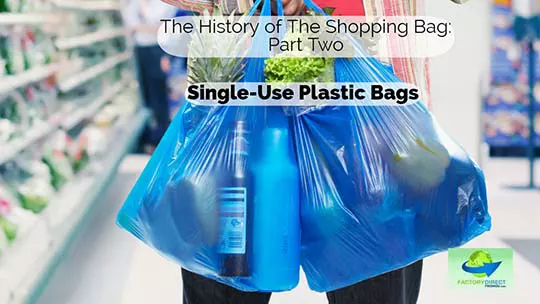
Plastic bags are lightweight and can easily become litter, leading to increased costs and challenges for waste management systems. Improperly disposed of plastic bags can clog drains and contribute to urban flooding. By choosing reusable bags or recycling plastic bags responsibly, we can minimize these waste management challenges.
- Plastic bags never completely biodegrade and can persist in the environment for hundreds of years.
- Plastic bags can enter the food chain when they break down into microplastics, affecting not only marine life but also human health.
- Plastic bags contribute to the overall plastic pollution crisis, which poses a threat to ecosystems and biodiversity.
By understanding the environmental consequences of plastic bags, we can make informed choices and take steps towards reducing their impact. Each individual’s efforts can make a difference in preserving our planet for future generations.
Regulations and Bans
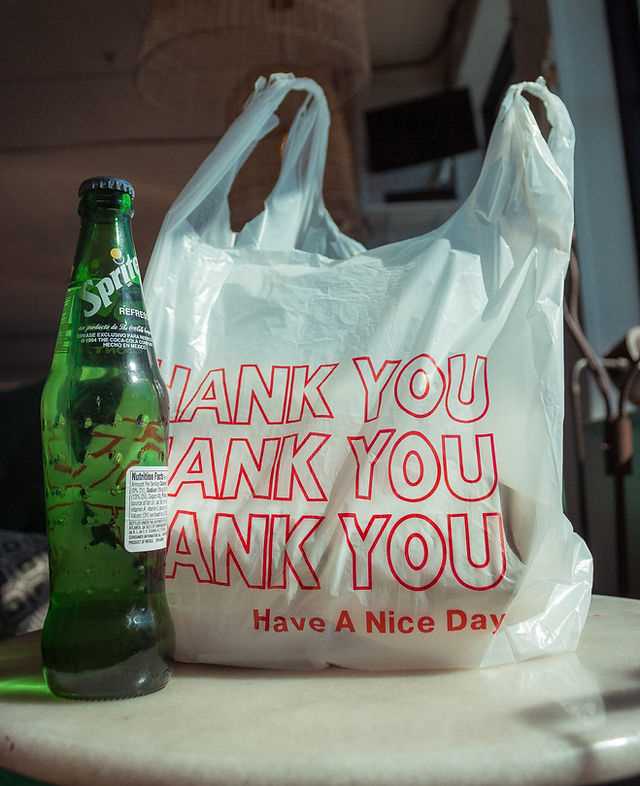
As awareness of the environmental impact of plastic bags grew, a number of regulations and bans were put in place to reduce their use in the United States. These regulations aimed to reduce litter, protect wildlife, and decrease the consumption of non-renewable resources.
Local Regulations
Many cities and towns across the country started to implement their own regulations regarding the use of plastic bags. These regulations often included fees or taxes on single-use plastic bags, providing an incentive for consumers to bring their own reusable bags or opt for paper bags instead. Some cities even implemented complete bans on plastic bags, prohibiting their use in retail establishments.
The city of San Francisco was one of the first major cities in the United States to implement a ban on plastic bags in 2007. This ban was eventually expanded to include all retail establishments and food service establishments. Other cities, such as Los Angeles and Seattle, followed suit and implemented their own bans on plastic bags.
Statewide Bans
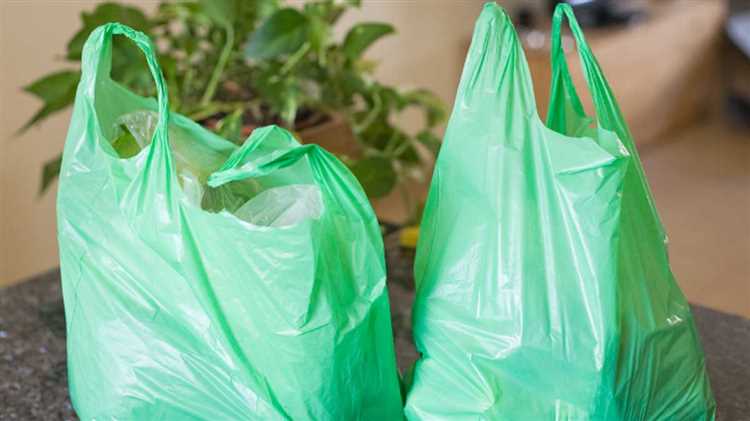
In addition to local regulations, several states have also enacted statewide bans or fees on plastic bags. For example, Hawaii became the first state to ban plastic bags at checkout counters in 2015. California, the most populous state in the country, also implemented a statewide ban on plastic bags in 2016. Other states, such as New York and Vermont, have imposed fees on plastic bags to discourage their use and promote the use of reusable alternatives.
These regulations and bans have proven to be effective in reducing the use of plastic bags and encouraging consumers to switch to more sustainable alternatives. Many studies have shown a significant decrease in plastic bag usage in areas where bans or fees have been implemented.
Overall, regulations and bans on plastic bags have played a crucial role in raising awareness about the environmental issues associated with single-use plastic and promoting the use of reusable alternatives. They have been successful in reducing plastic waste and promoting more sustainable practices among consumers.
Understand the Governmental Laws and Restrictions on Plastic Bags
The United States government has implemented various laws and restrictions on the use of plastic bags in recent years in an effort to reduce their environmental impact. These laws and restrictions aim to promote sustainability and encourage the use of reusable alternatives.
State governments have taken the lead in implementing these regulations, with California being the first state to ban single-use plastic bags in 2014. Other states, including Hawaii, New York, and Vermont, followed suit and enacted similar measures to restrict or ban plastic bags.
Many cities have also taken action to regulate the use of plastic bags. For example, cities such as San Francisco and Seattle have banned single-use plastic bags and require retailers to charge a fee for paper bags. These fees serve as an incentive for consumers to bring their own reusable bags.
In addition to bans and fees, some states and cities have implemented recycling programs for plastic bags. These programs encourage consumers to properly dispose of their plastic bags and provide convenient drop-off locations for recycling.
It is important for consumers to understand the specific laws and restrictions on plastic bags in their area. By familiarizing themselves with these regulations, individuals can make informed decisions and actively contribute to the reduction of plastic bag waste.
- Research the laws and restrictions on plastic bags in your state.
- Consider using reusable bags instead of single-use plastic bags.
- Support local businesses that promote sustainable practices.
- Recycle your plastic bags at designated drop-off locations.
Q&A:
When were plastic bags introduced in the United States?
Plastic bags were first introduced in the United States in the 1950s.
Why were plastic bags invented?
Plastic bags were invented as a lightweight and durable alternative to paper bags.
How did plastic bags become popular in the United States?
Plastic bags became popular in the United States due to their convenience and low production cost.
What are the environmental impacts of plastic bags?
Plastic bags have significant environmental impacts, including pollution, harm to wildlife, and contribution to greenhouse gas emissions.
Are there any regulations in place regarding plastic bags in the United States?
Yes, many states and cities in the United States have implemented regulations such as plastic bag bans or fees to reduce their usage.
When were plastic bags first introduced in the United States?
Plastic bags were first introduced in the United States in the 1950s. They were initially used by stores to package products and provide convenience to customers.